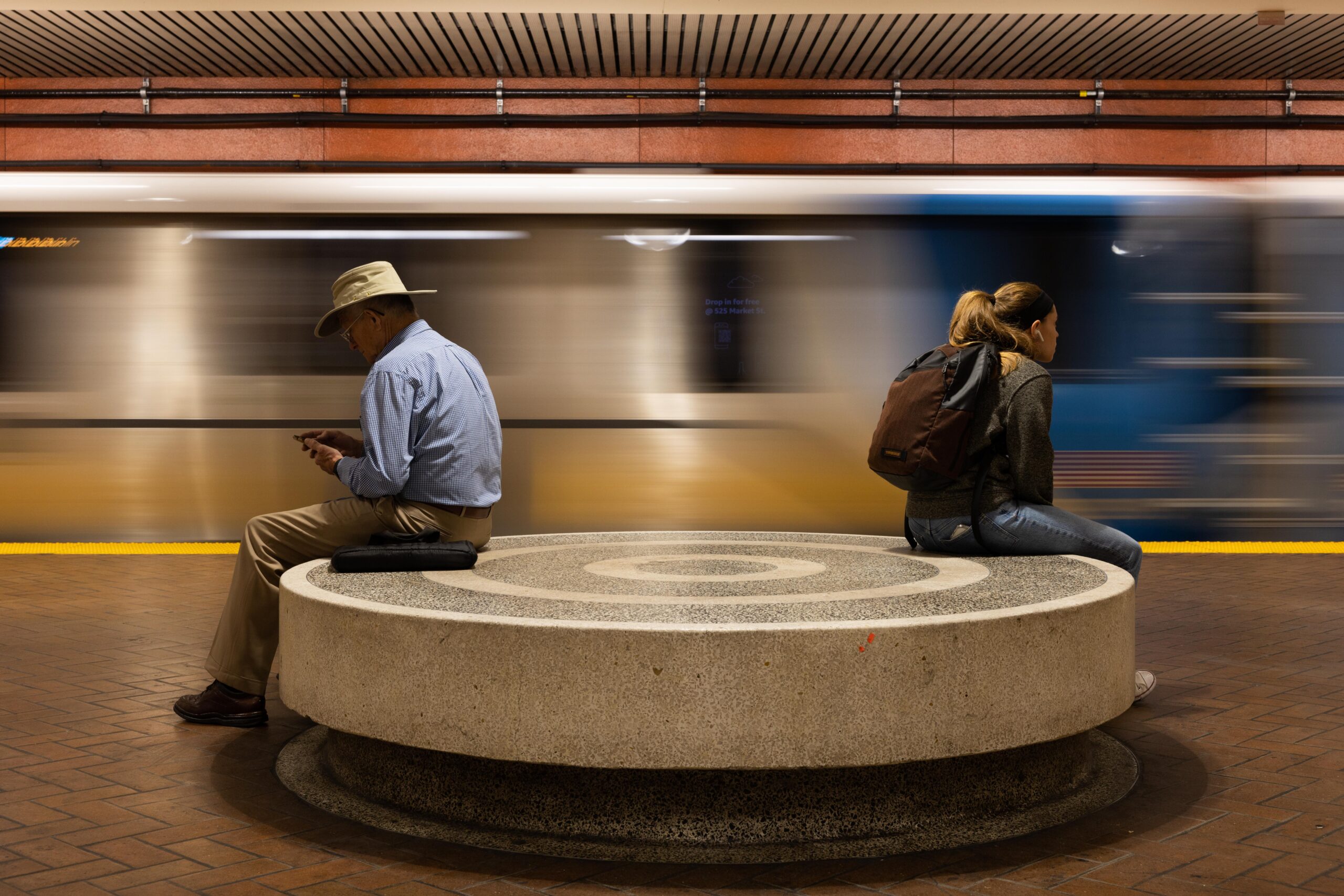Asked about the top three problems facing Bay Area Rapid Transit (BART), the system’s general manager Bob Powers had only one answer: the agency’s impending fiscal crisis.
“No. 1 is the fiscal cliff because everything else there is a subset of it,” Powers said in an interview at the organization’s Oakland headquarters.
What’s more—short of begging the state and federal government for additional funding—there are limited options for the agency to dig its way out, he said.
“I can put a hiring freeze on today, I’m looking at overtime, but all of the levers I can pull are just around the perimeter of that deficit,” Powers said. “Fundamentally, we’ve got to figure out how to invert our funding structure.”
This week, BART leadership and its board of directors will be meeting to discuss the organization’s fiscal future in a series of workshops and to help draw up a strategy that could include new revenue sources and expense reductions.
Pandemic-era federal aid is dwindling. While BART previously forecasted that the $1.6 billion in funds would end August 2025, the new deadline informed by actual ridership numbers is now January 2025 and fiscal year 2025’s deficit is now projected at $140 million.
“We didn’t see a lot of ridership growth at the end of last year, and when you look generally at what’s happening in Downtown San Francisco, the growth has leveled off,” said Mike Eiseman, BART’s director of financial planning.
What the system has in store, as monthly ridership hovers at about 40% of pre-pandemic levels, are years of $300 million-plus deficits stemming from a lack of fares—once its largest source of operating revenue.
Prior to the pandemic, Powers said BART was world-class in its 70% farebox recovery rate, or the proportion of its operating expenses that were paid by passenger fare. But with ridership recovery near the bottom of peer services—Caltrain’s 33% recovery is even lower—that strength became an albatross.
Sales tax is now BART’s single largest sustained source of operating revenue, a somewhat concerning prospect from a financial planning perspective.
“We used to think of it as a volatile revenue source, but now compared to fare revenue it's pretty stable,” Eiseman said.
BART officials plan to draw up a deficit reduction plan that includes limiting new expenses, finding new revenue sources and reviewing capital projects and present it to the board of directors by March 31. Those revenue boosters could include two 5.5% fare increases starting in January 2024.
A breakdown of the agency’s 2024 budget shows that employee wages, fringe benefits and overtime costs make up around 50% of the total budget. The organization expects operating expenses to keep rising over the next five years with a $61 million increase between 2023 and 2024.
Labor costs are rising in line with an agreement with the organization’s labor unions that boosts wages by 10.5% over the next three fiscal years. New contract negotiations are scheduled to open up in fiscal year 2025, the same time that BART’s fiscal cliff is slated to hit.
“I think that was a good investment in labor,” said Pamela Herhold, the assistant general manager of performance and budget at BART. “I’m grateful for the slight bump in salaries that are necessary to attract and retain good talent, but it was not nearly as high as some other agencies.”
BART leadership has been busy hitting the legislative halls in Sacramento to lobby for additional funding for the system and regional public transportation writ large.
Among BART’s biggest champions has been state Sen. Scott Wiener, who has made transit support a hallmark of his time in the state legislature. Wiener recently formed a new select committee to help study regional public transit challenges in the Bay Area.
“We’re going to the state and saying we need more investment,” said Bevan Dufty, a BART director representing San Francisco. “The next upcoming budget is the real do-or-die. It’s not sunshine and light if I’m being honest with you.”
But the state is facing its own budget crunch with a projected $22.5 billion budget shortfall that has led the governor to propose a series of cuts to previous climate and transportation funding commitments.
Outside of budget support, BART is contemplating a regional or BART-only funding ballot measure that could be targeted for 2024 or 2026. However, there may be signs that appetite for funding public transit initiatives at a ballot box may be waning, as evidenced by the narrow failure of a $400 million transportation bond in June.
In a “doomsday scenario,” BART planners wrote as part of a regional planning exercise that the agency could terminate two lines and cancel weekend service. BART leadership has remained adamant that the system can’t cut its way to sustainability, saying that deep service cuts lead to spiraling revenue.
But if cuts aren’t the answer, there is a deeper question on how the system may need to reshape service away from 9-to-5 office commutes that may be a thing of the past in the Bay Area.
“There's opportunities on the nights and weekends,” Powers said, noting that weekend ridership has returned faster than weekday traffic.
“We have to market that and pivot off of that to try and maximize that off-ridership when folks are not going to the office those three days of the week.”
